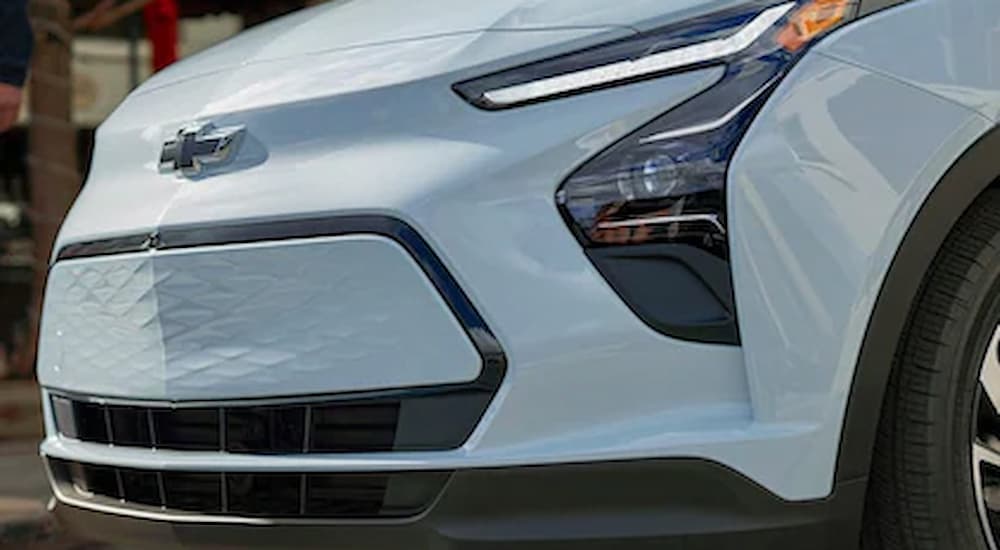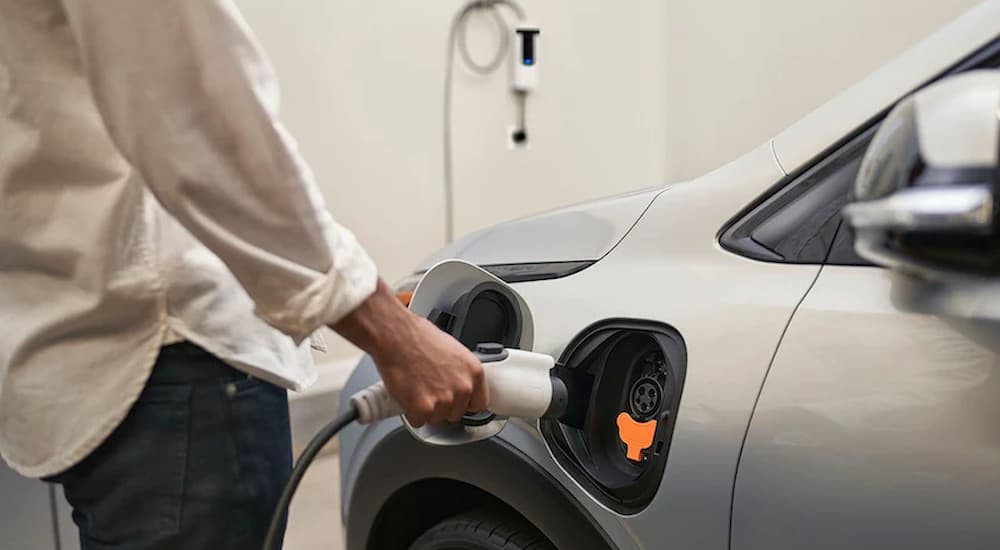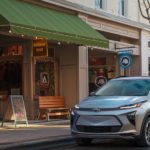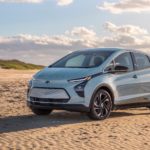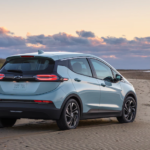Electric vehicles seem to be here to stay. Whether you want one or not, you have to admit that they’ve found a way into the daily habits of a lot of drivers out there. One such popular EV is the Chevy Bolt EV. It came onto the scene back in 2016 and has steadily picked up an audience over the years. The newest model, the 2022 Chevy Bolt EV, promises new features and more advanced technology. However, one might question exactly how difficult it is to charge a Bolt EV and whether or not you already have the equipment to do so?
Interestingly enough, the 2022 Bolt EV is actually designed from the get-go to accommodate the charging needs of just about everyone, and the vehicle can be recharged just about anywhere that has an outlet. No, really. It’s true. The Bolt EV isn’t just designed to get charged at the local charging station; you can also opt to charge it in a number of different ways. We’ll discuss some of the charging properties and what’s available for this model year’s outing.
Different Types Of Charging
The 2022 Chevy Bolt has the same charging levels as the previous model years, allowing you to charge using either Level 1, Level 2, or DC fast charging. Despite the fancy name, Level 1 charging is when you charge at home using a standard 120V outlet. Level 2 charging is when you use a 240V home charging station to refill the battery, and DC fast charging is available at public charging stations that can more quickly boost the charge times of the vehicle.
Basically, everyone can use Level 1 charging so long as they have a wall outlet and the right adaptor. Using Level 2 charging requires either installing a home charging station (which generally costs a couple of hundred dollars) or making use of one of the public charging stations scattered about. Level 2 chargers can provide up to 240V worth of charging. If you want to reduce charge times, you go to a specialty station with a DC fast charger. DC fast chargers can provide 480V or more, bringing charge times down to approximately half an hour or so.
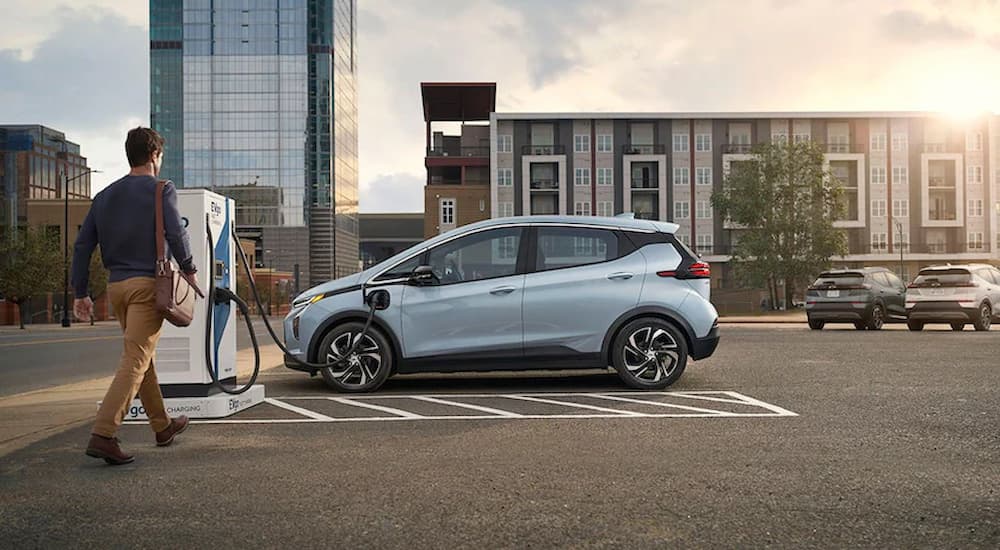
Charge Times
Level 1 charging can take anywhere between several hours or up to several days to recharge a vehicle, depending on how depleted the battery is and the stability of the amperage. Level 1 charging nets you about 4 miles of range per hour, and the 2022 Bolt tops out at an estimated 259 miles of range on a single full charge. So if the battery is completely drained, you’re looking at close to three full days of charging.
You can usually fully charge a vehicle using a Level 2 charger in under 10 hours. If the vehicle’s battery isn’t completely depleted, then you can top off the charge with just a few hours of charging a day. DC fast charging gives you the best option, charging from 0% to 100% in about an hour and a half. That works out well for those who do a whole lot of commuting and need to get their electric vehicle charged to the max in the shortest amount of time possible.
The benefit of the 2022 Bolt EV is that it now comes standard with DC fast charging, so if you happen to be around a DC fast charging station, you can keep your Bolt EV topped off with very little time spent on charging, regardless of the trim level. But what about the average person? How difficult would it be to keep the 2022 Bolt EV charged at home if you weren’t around public charging stations very often or didn’t have access to a DC fast charger? Well, we’ll get into that.
Different Types Of Connections
Another benefit of the 2022 Chevy Bolt EV is that it comes with a dual-level charge cord for the Level 1 charging at 120V and Level 2 charging at up to 240V. The interesting thing about it is that the cord options allow for NEMA 5-15 and 14-50 plugs. What does this even mean? And why is this important for those who may not have access to public charging stations? Well, it means a lot in terms of how you can charge the Bolt EV and where.
For those of you who don’t know, NEMA 5-15 outlets are the three-prong outlets you find in every home in America. NEMA 14-50 plugs are nearly as common, but can handle up to 240V output thanks to having a four-wire configuration consisting of two hots, a ground, and a neutral. Typically, NEMA 14-50 plugs are found in places that require high voltage output, such as outlets where you plug in your refrigerator, oven, or dryer. These are also sometimes found at public campgrounds.
The convenience of the NEMA 14-50 plugs means that you can get more amperage out of the outlet, meaning more watts to your Bolt EV and more power to the battery pack. The Bolt EV itself has an SAE J1772 / CCS2 connector, which is the standard 5-pin plug used to charge electric vehicles. The benefit of the SAE J1772 connector is that it’s what allows the Bolt to plug in at public Level 2 stations, while the CCS2 connect is what lets it receive the charging boost from DC fast chargers.
Charging Effectively Without A Charging Station
While public charging stations are the big talk of the town whenever someone brings up an electric vehicle, technically, you don’t need one if you have the right kind of connections at home. The 2022 Bolt EV actually comes with an 11.5 kilowatt onboard charging module, so you could really benefit from any kind of output that matches the Bolt’s compatible intake.
The addition of the NEMA 5-15 and 14-50 interchangeable plugs means you can boost charge times with a Level 2 home charger if you have a NEMA 14-50 compatible outlet. With an output of up to 240V at approximately 30 amps or so, you’re looking at an average of around 7 kilowatts of power. It’s not quite on the line of a Level 2 public charging station, which can supply up to 20 kilowatts of power (although the 2022 Bolt EV can only handle 11.5 kilowatts). However, the upside to the NEMA option is that you don’t have to spend thousands to have any kind of special wiring installed and still have decent charge times.
What A Difference A Year Makes
So, how difficult is the 2022 Chevy Bolt EV to charge? Not difficult at all. The fact that Chevrolet decided to make the charging plugs for NEMA outlets more readily available across the line means that a lot of people who may have been leery about getting a Bolt EV due to requiring a special charging station might consider the vehicle knowing they don’t need anything of the sort. In fact, any compatible NEMA 14-50 outlet should provide what you need for a couple of hours’ worth of charging to get to your next destination (or two).
Adding these options to the 2022 model year of the Bolt EV gives people who are less inclined to explore the electric vehicle option more reasons to at least consider it. Not having to spend thousands on a charging station or waiting hours at a public station makes an electric vehicle look a lot more appealing. Besides, more options are always better, and having more ways to charge the Bolt EV in convenient places helps everyone in the long run.
